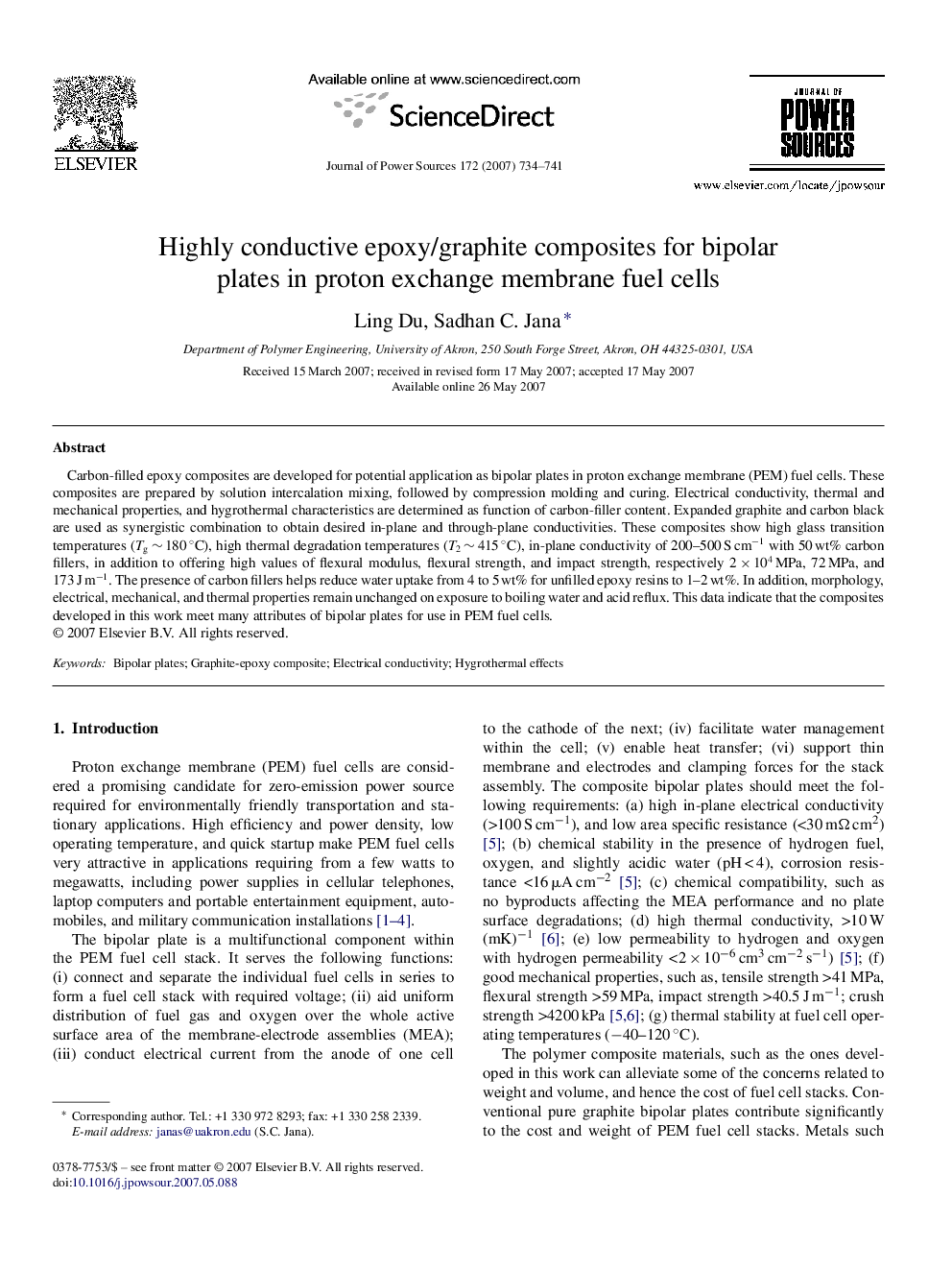| Article ID | Journal | Published Year | Pages | File Type |
|---|---|---|---|---|
| 1286194 | Journal of Power Sources | 2007 | 8 Pages |
Carbon-filled epoxy composites are developed for potential application as bipolar plates in proton exchange membrane (PEM) fuel cells. These composites are prepared by solution intercalation mixing, followed by compression molding and curing. Electrical conductivity, thermal and mechanical properties, and hygrothermal characteristics are determined as function of carbon-filler content. Expanded graphite and carbon black are used as synergistic combination to obtain desired in-plane and through-plane conductivities. These composites show high glass transition temperatures (Tg ∼ 180 °C), high thermal degradation temperatures (T2 ∼ 415 °C), in-plane conductivity of 200–500 S cm−1 with 50 wt% carbon fillers, in addition to offering high values of flexural modulus, flexural strength, and impact strength, respectively 2 × 104 MPa, 72 MPa, and 173 J m−1. The presence of carbon fillers helps reduce water uptake from 4 to 5 wt% for unfilled epoxy resins to 1–2 wt%. In addition, morphology, electrical, mechanical, and thermal properties remain unchanged on exposure to boiling water and acid reflux. This data indicate that the composites developed in this work meet many attributes of bipolar plates for use in PEM fuel cells.
